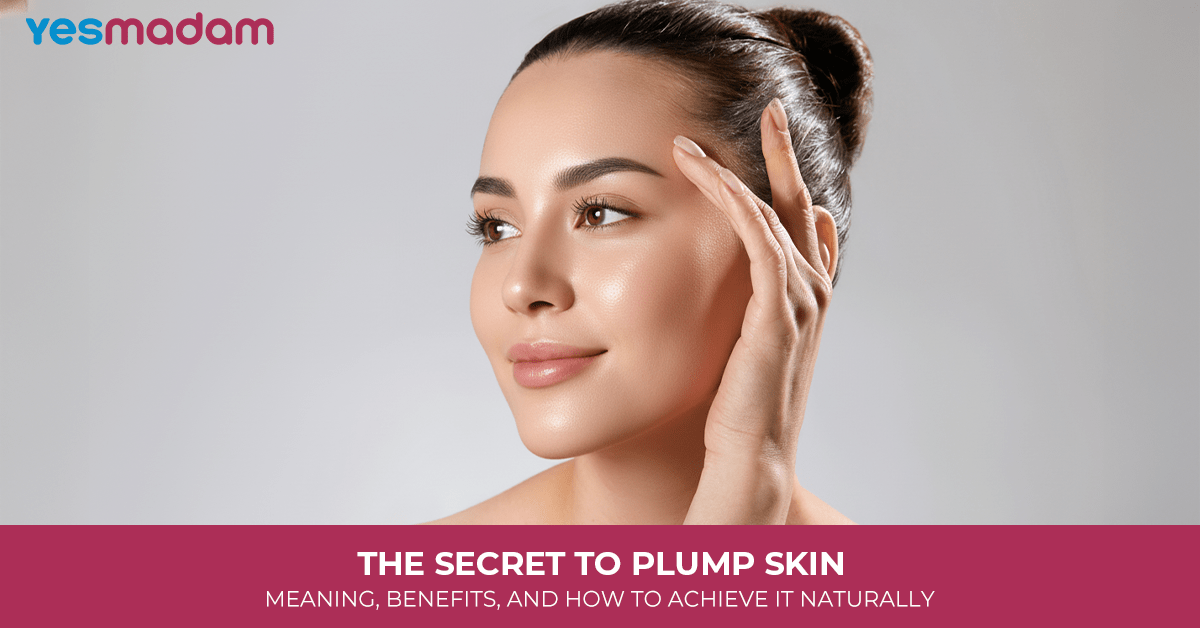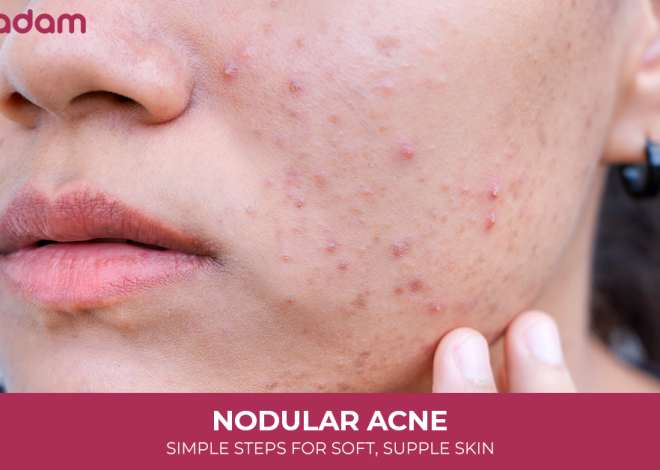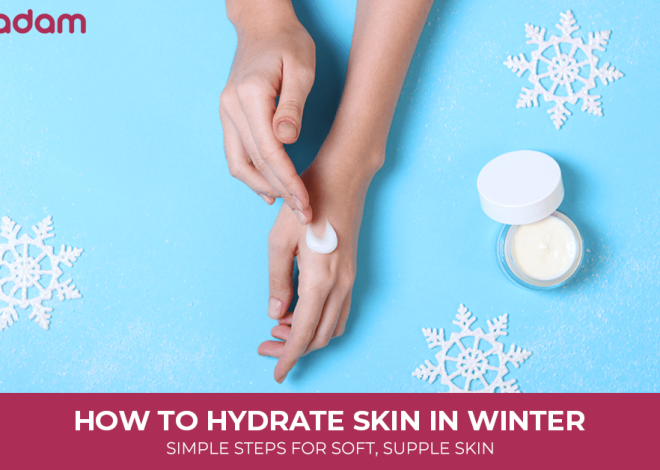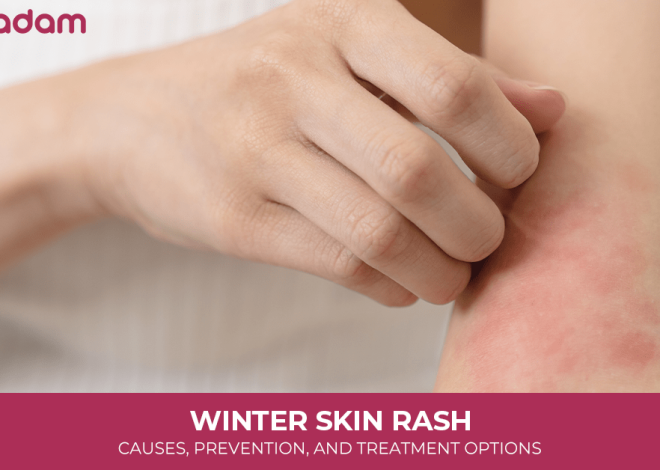
The Secret to Plump Skin: Meaning, Benefits, and How to Achieve It Naturally
We’ve all admired that radiant, healthy glow that makes skin look soft, youthful, and full of life. That glow often comes from something known as plump skin. But what exactly does that mean, and more importantly, how do you get it? If you’ve ever looked in the mirror and wished your complexion felt smoother, firmer, and more hydrated, then you’re in the right place.
In this blog, we’ll break down the plump skin meaning, explore what makes skin lose its bounce, and share practical, natural ways to restore it. We’ll cover everything from skin plumping ingredients to daily habits that help you understand not just how to have plump skin, but also how to keep skin plump over time.
Let’s Get Started…
Table of Contents
What Does Plump Skin Mean?
When people talk about plump skin, they’re usually referring to skin that looks youthful, hydrated, and supple. Plump skin meaning is essentially skin that’s full of moisture, has good elasticity, and reflects light evenly. It feels smooth to the touch, has minimal fine lines, and gives off that fresh-faced, well-rested appearance.
Think of a grape versus a raisin. A grape is firm, hydrated, and bouncy, while a raisin, though still nutritious, is wrinkled and dry. Plump skin is the grape version of your complexion.
More Information For You: How to Get Glass Skin Naturally at Home
Why Do We Lose Plumpness in the Skin?

Skin doesn’t stay plump forever, and there are a few reasons why:
1. Loss of Collagen and Elastin
Collagen provides structure and firmness, while elastin allows skin to snap back into place. As we age, the natural production of both slows down.
2. Dehydration
Without enough water, skin cells shrink, making the skin appear dull, flat, and less bouncy.
3. Lifestyle Factors
Stress, poor sleep, excessive sun exposure, smoking, and even high sugar consumption can rob your skin of its natural resilience.
4. Environmental Damage
Pollution and UV rays create free radicals, which break down collagen faster and contribute to sagging.
5. Natural Aging Process
Even with the best care, the skin naturally changes with time. The goal isn’t to stop aging—it’s to age with healthy, glowing, plump skin.
More Information For You: Skin Problems in Summer
Tips to Get Plump Skin
Here’s the good news: while you can’t completely reverse time, you can absolutely restore and maintain plumpness. Let’s explore how.
1. Hydrate from Within
Water is the foundation of plump skin. Drinking enough fluids keeps skin cells full and resilient. Adding hydrating foods like cucumbers, watermelon, and oranges helps too.
2. Moisturize Smartly
Using moisturizers with humectants like hyaluronic acid can draw water into the skin, giving it that instantly plumped look. Pair them with occlusives (like oils) to lock in hydration.
3. Prioritize Sleep
Your skin repairs itself while you sleep. Skimping on rest shows up as dullness and fine lines. A solid sleep routine is one of the most underrated plumping tricks.
4. Choose Skin Plumping Ingredients
Certain ingredients, when applied topically or consumed through diet, help restore skin fullness. (We’ll go deeper into this shortly.)
5. Facial Massage and Exercise
Stimulating blood flow brings oxygen and nutrients to skin cells, making your complexion naturally glow and feel firm.
Natural Skin Plumping Ingredients
Let’s take a closer look at natural skin plumping ingredients that are proven to support hydration and elasticity.
1. Hyaluronic Acid
Though naturally found in the body, it decreases with age. Applied topically, it pulls in moisture from the environment to hydrate the skin deeply.
2. Aloe Vera
Rich in vitamins, minerals, and amino acids, aloe soothes, hydrates, and supports natural skin regeneration.
3. Vitamin C
A potent antioxidant that helps boost collagen production, keeping the skin firm and radiant.
4. Omega-3 Fatty Acids
Found in foods like salmon, chia seeds, and walnuts, omega-3s strengthen the skin barrier and lock in moisture.
5. Collagen Peptides
Consuming collagen supplements or bone broth may help restore skin elasticity from the inside out.
6. Glycerin
A simple but powerful humectant that draws water into the skin for long-lasting hydration.
Don’t Miss: Acne Vulgaris Treatment
How to Have Plump Skin Every Day
Consistency is key. Achieving plump skin is not about a one-time treatment—it’s about daily habits.
Morning Routine
- Cleanse with a gentle, hydrating cleanser.
- Apply a vitamin C serum.
- Layer on hyaluronic acid or a hydrating toner.
- Seal with a moisturizer.
- Finish with sunscreen (non-negotiable).
Evening Routine
- Double cleanse to remove impurities.
- Use retinol or peptides to encourage skin renewal.
- Apply a rich, nourishing moisturizer or overnight mask.
- Consider adding facial oil for extra hydration.
How to Keep Skin Plump for Long-Term

Short-term plumping is great, but the real goal is to keep skin healthy and resilient for years.
Eat a Skin-Friendly Diet
Focus on antioxidant-rich foods (berries, leafy greens, nuts) and reduce processed sugar that accelerates collagen breakdown.
Manage Stress
Chronic stress increases cortisol, which breaks down collagen and reduces skin hydration. Meditation, yoga, or even a daily walk helps.
Avoid Over-Exfoliation
Too much exfoliation can strip the skin barrier, leading to dehydration and irritation. Gentle, consistent care wins.
Protect Against UV and Pollution
Daily SPF and antioxidant serums shield the skin from external stressors that accelerate aging.
Stay Consistent
Plump skin is a reflection of long-term care, not quick fixes. Treat your skincare like self-care.
Skin Plumping Ingredients vs. Treatments
While natural ingredients work wonders, professional treatments can also help:
- Microneedling: Stimulates collagen production.
- Dermal Fillers: Provide instant plumpness but are temporary.
- Chemical Peels: Help with cell turnover for fresher-looking skin.
Natural care and professional treatments don’t have to be either/or, they can complement each other.
Conclusion
Achieving and maintaining plump skin is less about chasing perfection and more about supporting your skin’s natural health. By understanding plump skin’s meaning, choosing the right skin plumping ingredients, and building habits that nourish from the inside out, you can enjoy a glowing, supple complexion at any age.
So, if you’ve been wondering how to get plump skin or how to keep skin plump over time, remember this: hydration, nourishment, protection, and consistency are the real secrets. Think of it as a long-term relationship with your skin—one that rewards you with radiance and resilience every single day.
FAQs
1. What does plump skin look like?
Plump skin looks firm, smooth, and hydrated. It reflects light evenly, has minimal fine lines, and feels bouncy to the touch, much like a fresh grape compared to a raisin.
2. Is plump skin the same as youthful skin?
Not exactly, but they are closely related. Youthful skin is often naturally plump due to higher collagen and hydration levels. With care, you can maintain plumpness even as you age.
3. How fast can I get plump skin?
Some methods, like applying hyaluronic acid, give instant results, while lifestyle changes like diet and sleep may take weeks. Consistency is what ensures lasting plumpness.
4. Can drinking water alone give me plump skin?
Water is essential, but it’s not the whole story. You also need skin-friendly ingredients, proper skincare routines, and protection against external stressors for full results.
5. Are natural skin plumping ingredients effective?
Yes, many natural ingredients like aloe vera, omega-3s, and vitamin C are proven to hydrate and support collagen, making them great options for plumping skin naturally.
6. How can I keep my skin plump in winter?
Layer hydrating serums, use a richer moisturizer, and consider adding a humidifier indoors. Cold air and heaters tend to dry skin out, so extra hydration is key.
7. Does diet really affect plump skin?
Absolutely. Antioxidant-rich foods, omega-3 fatty acids, and hydration all impact how firm and radiant your skin looks. A poor diet can make skin appear dull and flat.
8. Is over-exfoliation bad for plump skin?
Yes, over-exfoliation damages the skin barrier, causing dehydration and irritation. Gentle exfoliation once or twice a week is enough for most skin types.
9. Are professional treatments necessary for plump skin?
Not always. While treatments like microneedling or fillers can enhance results, many people achieve plump skin with consistent at-home care and natural ingredients.
10. Can aging skin still become plump?
Yes. While aging naturally reduces collagen, skin can regain hydration and firmness with the right care, diet, and protective habits. It’s never too late to start.



